A-Z of chiptune
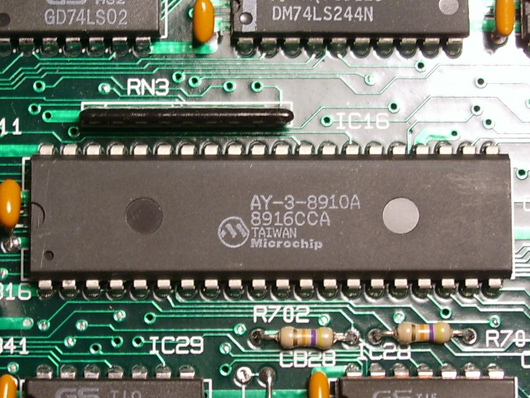
AY-3-8910
A is for… AY-3-8910
The AY-3-8910 is a sound chip designed by General Instruments and famously used in the ZX Spectrum 128 and Amstrad CPC.
It offers three channels of sound, each able to play a square wave with filtered noise optionally mixed in. There's also a single volume LFO/envelope that can be applied to any or none of the channels - chip musicians exploit this by setting it to very fast LFO speeds, to create triangle-style waveforms, or to cause crude ring modulation with the square waves.
AY Riders are a group producing music exclusively using the AY chip, while ProjectAY collates many AY tunes in one place.
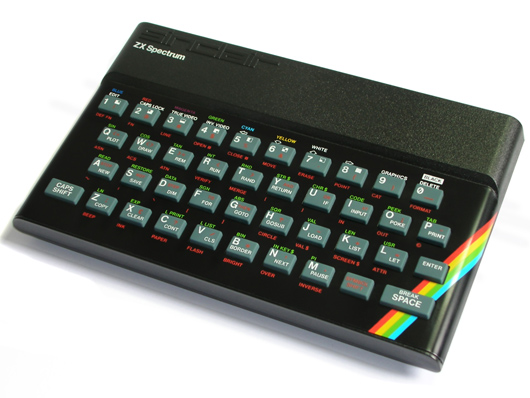
Beeper music
B is for… Beeper music
The original ZX Spectrum's sound output was an extremely crude 1-bit 'beeper' that could be set to an 'on' or an 'off' state - flipping rapidly and regularly between the two gives a steady tone.
It's not really a sound chip at all, as it requires the CPU to be constantly feeding data to it, and it was only really intended for sound effects. That didn't stop crafty programmers pushing it to the max, though - witness Tim Follin's multi-channel sound routines, as heard in games like Agent X 2 and Chronos. And Brian Marshall's ahead-of-its-time banger of a tune for 1986's Prodigy has to be heard to be believed - breakcore/classical mash-up, anyone? Today's most active 1-bit maniac is probably Mister Beep.
B is also for... Bits!
Chip music is often referred to as '8-bit' music. This is a reference to the 8-bit CPUs used by the vast majority of late ‘70s and early ‘80s home computers and games consoles. It does not refer to the bit-depth of the audio they produce, however.
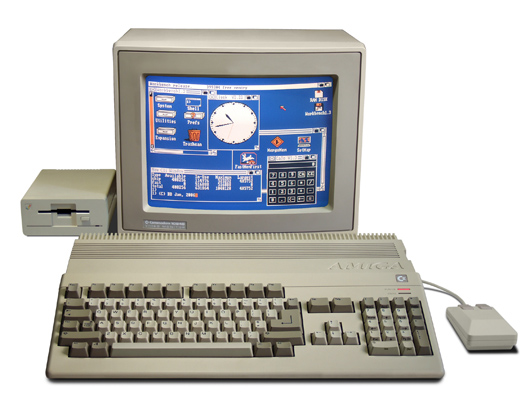
Chip music
C is for… Chip music
In chip music's ‘80s heyday, the term hadn't yet been coined - it was just "computer game music", "SID music", and so on. Around the turn of the ‘90s, Commodore Amiga musicians made tunes that imitated the already-quaint sound of 8-bit machines, the sound chips of which were basically crude synths, unlike the Amiga's Paula chip, which was designed to play back samples from the computer's memory.
Such songs were called "chiptunes" to differentiate them from regular Amiga music. The term was eventually applied to music from the original 8-bit machines too, and the modern definition is even broader and basically covers anything that shares the bleep-bloop aesthetic of ‘80s videogame music, regardless of the technology used to create it.
C is also for... Compos
Related to the demoscene (on which more imminently), compos are simply competitions to see who can write the best tune. Often there are restrictions on individual compos; for example, all entrants must use a supplied set of samples to create their song.
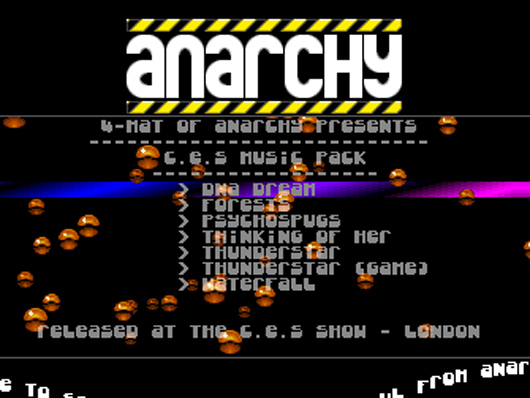
Demoscene
D is for… Demoscene
The demoscene kicked off around the mid-‘80s on 8-bit machines, most notably the C64. It was very much tied to the cracker scene of the time; cracked versions of games (ie, with copy protection removed, and sometimes with cheats added, etc) often featured an 'intro' bigging up the cracker group responsible, often accompanied by some pretty graphics and a nifty bit of chip music.
Eventually, the 'intro' concept spawned full-length, standalone pieces called demos. Even as the demoscene moved onto more powerful computers like the Commodore Amiga and later the PC, chiptunes were still used as they could be stuffed into very small amounts of computer memory.
D is also for... Digitised sounds
Back in the day, sampled sounds were often described as "digitised", and some chip music uses digitised sounds, often for the drums.

Echo
E is for… Echo
Old school sound chips didn't have any effects built in, but you could always try to fake it. An echo can be created by programming the same thing on two different channels, and offsetting one and making it a bit quieter... but then you've just wasted another precious channel!
A more economic method is to program your tune in one channel, then go through and fill the gaps between notes with quieter "echoes" of earlier notes. This can really bring your tunes to life and, what's more, it sounds distinctly different from a normal echo effect.
Echo using one channel
Echo using two channels
E is also for... Emulators
You don't need to own a vintage C64 or a real Game Boy to make chip music - you can just use an emulator instead, which is a program for your PC or Mac that lets you run software.
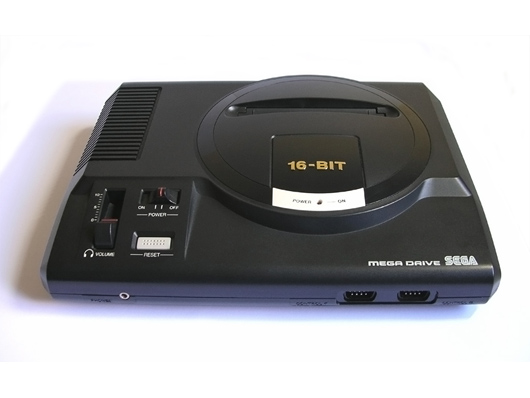
FM Synthesis
F is for… FM Synthesis
Towards the end of the ‘80s, sound chips were becoming more advanced, and many were based around FM synthesis, giving game composers the power to inflict parping synth brass, bell-like tones and funny wobbling noises upon their listeners.
Games consoles like the Sega Mega Drive/Genesis used such chips, as did early PC Ad Lib cards. However, the growing sophistication of these chips (increased numbers of channels and better sounds) and their ability to play back samples meant that they didn't have so much in common with earlier chip music.
F is also for... Fake-bit
That is, music that sounds like chip music but is made with modern equipment rather than authentic vintage hardware.
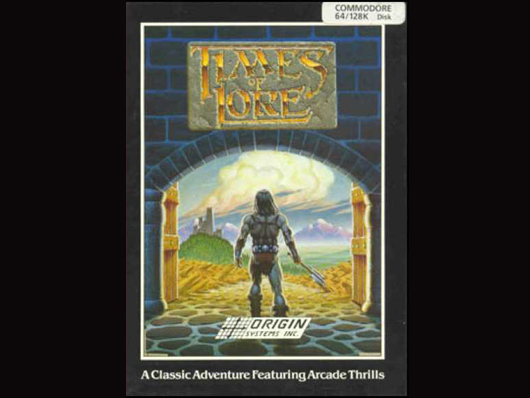
Galway, Martin
G is for... Galway, Martin
Martin Galway is one of the original 8-bit chip music heroes. As well as writing some corking tunes, he was known for pushing the C64's SID chip to the limit, and being one of the first SID musicians to apply then-new techniques such as pulse-width modulation and sampling.
His sound routine for Times Of Lore even varies the tune each time it's played, so it's never the same twice!
G is also for... GoatTracker
A Mac-based tracker for making SID music. If you've ever wanted to make SID tunes, this is probably the easiest way to go about it, and the resulting songs will work on a real C64 too.
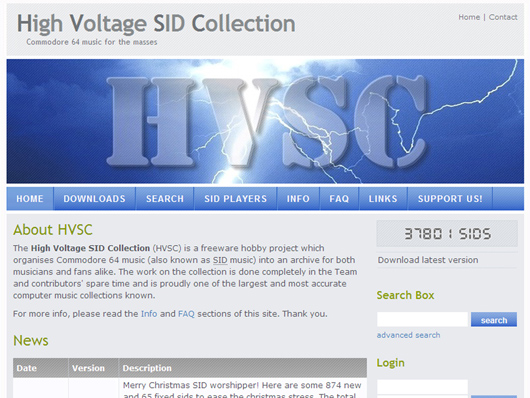
HVSC
H is for... HVSC
Or the High Voltage SID Collection. This extensive repository contains tens of thousands of SID songs, many with metadata that tells you a bit more about the background of the song, such as who composed it, and any interesting trivia.
The songs are in SID format, so you'll need a SID player program to hear them on your PC or Mac. If that's all too much trouble, try http://sid.oth4.com or http://www.6581-8580.com, both of which host SID music in MP3 format, all recorded from real SID chips.
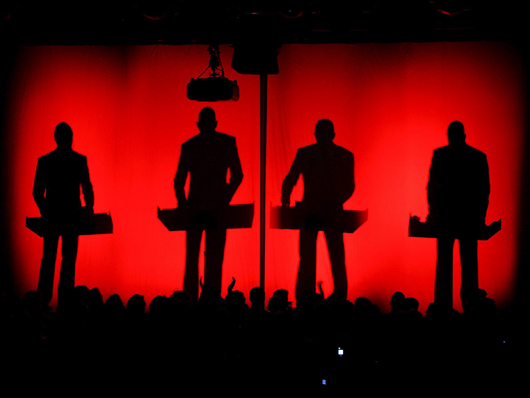
Influences
I is for... Influences
Chip music came out of nowhere, and meant musicians had to work with a whole new sound and set of techniques in order to get the most impressive results from the sound chips.
The best chip musicians also wrought great musicality from them, though, and their musical influences were many and varied. While it's impossible to present a definitive list, it's fair to say that synth-heavy artists like Jean-Michel Jarre, Vangelis and Kraftwerk held some sway, as did classical music in general, albeit presented in a more digestible 'neo-classical' format.
The straightforward pop sensibilities of synthpop were also manifested in 8-bit tunes, and plenty of chip musicians used their skills to imitate rock bands, often complete with wailiing lead guitars.
I is also for... Impulse Tracker
A tracker for PC that was sometimes used to make chiptunes. Notably, it offered filters - something that most trackers up to that point did not.

Janne Suni
J is for… Janne Suni
Suni is known in the demoscene as Tempest and is the original composer of Acidjazzed Evening, a tune originally written as a 4-channel Amiga MOD (tracker) tune.
C64 musician GRG liked it so much that he did a SID remix of the song, with Tempest's consent. GRG wasn't the only one who was enamoured of the melody, though, as mega-producer Timbaland allegedly sampled a huge section of it and stuffed it into Nelly Furtado's track Do It. Controversy ensued, with Timbaland vigorously fighting his corner.
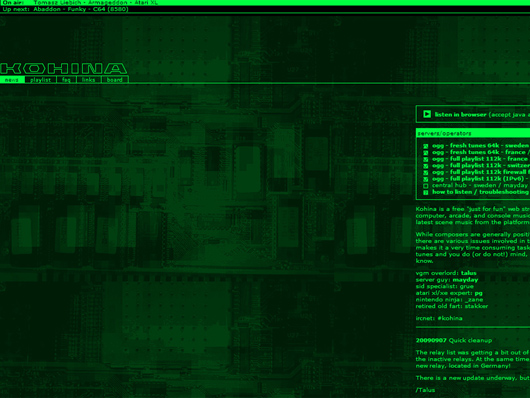
Kohina
K is for… Kohina
Can't be bothered hunting out chiptunes and trying to get their weird file formats to play on your computer? Then kick back and relax with Kohina, an internet radio station that pumps out nothing but piping hot chip music 24/7.
K is also for…
Konami, a developer whose games have been blessed with many classic soundtracks. Check out Ping Pong, Space Manbow, Kings Valley II, and series like Castlevania and Gradius just for starters...
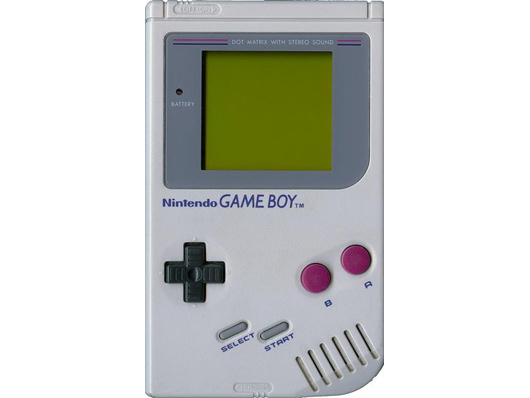
Little Sound DJ
L is for… Little Sound DJ
AKA LSDJ, a music program for the Nintendo Game Boy. Programs like this and Nanoloop helped to popularise chip music with a whole new generation of musicians, no doubt due to the Game Boy being that bit cooler than crusty old 8-bit home micros. And, of course, the Game Boy is entirely portable, making it ideal for knocking out tunes on the move, or indeed, bringing chip music into the live arena.
LSDJ itself is a pretty powerful program, with features including drawable waveforms, filters and sample support.
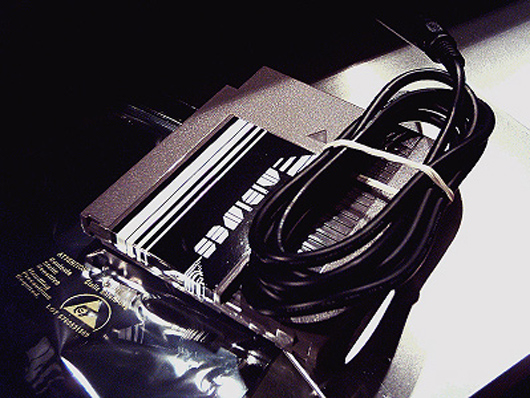
MIDI control
M is for… MIDI control
There are a number of solutions for controlling retro hardware via MIDI, which provides the potential for integrating totally authentic sounds into a modern setup.
Hardware includes the MIDInes cartridge for NES, MSSIAH for C64, Highly Liquid MIDI2600 for Atari 2600, and a DIY MIDI interface for the Game Boy. Atari ST users, meanwhile, can simply fire up MaxYMiser and control it via the ST's built-in MIDI ports.
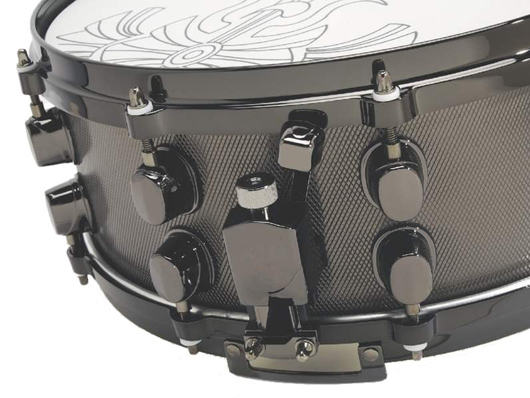
Noise
N is for... Noise
Most sound chips included a noise generator, and this was your first port of call for many percussion sounds like snare drums, hi-hats, shakers and cymbals. Some chips could also apply a filter to the noise for further variety - by adjusting the filter position as the noise plays, more distinctive sounds can be created.
Also try mixing noise with a downwards 'zap' - this works well for snare drums.
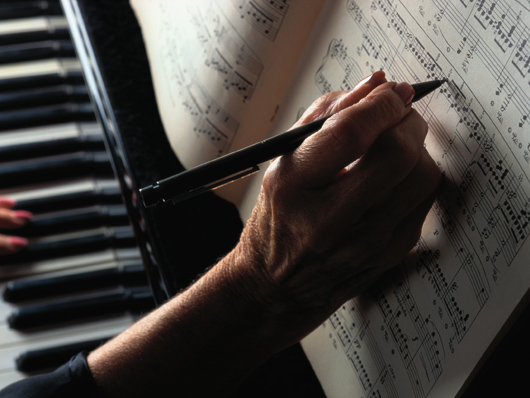
Ornament
O is for… Ornament
To create distinctive sounds using only limited waveforms, chip musicians often use ornaments, which are additional quickly-played notes used for embellishing the main melody - you might know them as grace notes.
A common chip music ornament is the octave 'blip' whereby the note starts one octave higher then drops down to the correct octave a fraction of a second later, giving a bright 'punch' to the start of the note. Usually, chip music software makes it easy to define and apply ornaments to your existing melody, so you don't necessarily have to program them manually. Ornaments can also be useful for adding accents to percussive sounds.
No ornament
Octave-up blip
Octave-down blip
O is also for... OverClocked Remix
OverClocked Remix is a website that specialises in remixes of game music, from the ‘80s up to the present day.
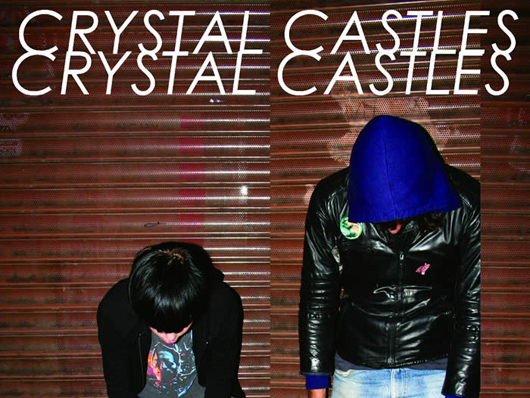
Plagiarism/sampling allegations
P is for… Plagiarism/sampling allegations
In recent years, there have been several cases of high-profile acts being accused of sampling chunks of chip music without seeking permission or giving credit, the most well-known examples being those concerning Timbaland and Crystal Castles.
There are plenty of other examples, however. It's slightly ironic, though, that back in the '80s, it was quite common for famous tunes to be used in videogame music, presumably with no legal permission sought. And they used to get away with it, too! It's fair to say that the ‘80s were more innocent times - these days, we're a lot more media-savvy, and musicians ought to know better.
P is also for… plogue chipsounds
Chipsounds is a virtual instrument that offers very accurate emulations of many sound chips, from common to obscure.
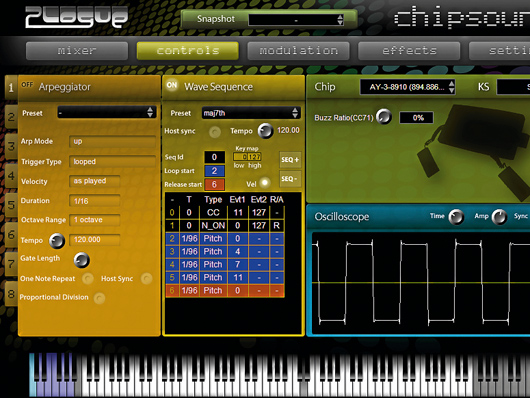
Quick arpeggios
Q is for… Quick arpeggios
Old school sound chips have only a few channels, so chip musicians came up with the idea of using ultra-rapid arpeggios to create the illusion of chords using just one channel.
To recreate this effect with a modern synth, you can use a monophonic patch and an arpeggiator set to a fast rate. Try using it with an 'evolving' sound, with the glide setting set to maximum, so that as you hold down the chord, the sound evolves rather than simply retriggering over and over again.
Basic technique
Chords played normally in Ableton Live
Chords played using arpeggiator in Ableton Live
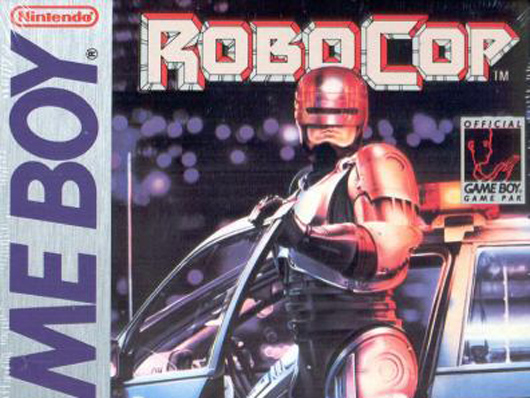
Robocop
R is for... Robocop
Does the music in this early 90s Ariston ad sound familiar to you? It's actually the music from the Robocop videogames, specifically the Game Boy version - you can check out the original in all its glory right here.
We've no idea what possessed Ariston to make the connection between their mundane white goods and Jonathan Dunn's haunting chiptune soundtrack, but we certainly applaud them for it.
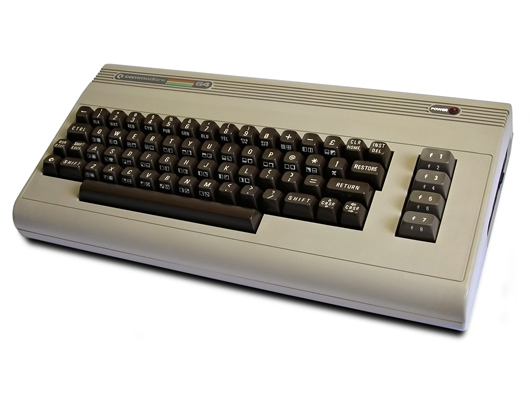
SID chip
S is for... SID chip
The most famous retro sound chip, the SID found in Commodore home computers such as the C64 was unquestionably the most powerful chip of its time, featuring three oscillators, filtering, ring modulation, selectable waveforms, and more.
If you want to get that distinctive SID sound in your modern DAW, you have a number of options. HardSID and SidStation are hardware solutions that use real SID chips, for a totally authentic sound; for convenience, check out virtual instruments like QuadraSID, plogue chipsounds and Nexus2 (with the SID expansion). Alternatively, grab a MSSIAH cartridge and a real C64, and plumb it into your rig like a MIDI synth!
S is also for… Sound chips
There are plenty of famous chips beside the SID, such as the Atari POKEY (Atari 2600), Ricoh 2A03 (NES), Konami SCC (MSX), and YM2612 (Megadrive/Genesis).
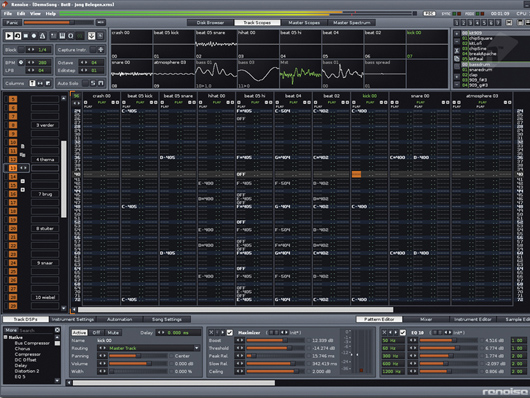
Trackers
T is for... Trackers
Since trackers came to prominence in the late ‘80s, they've been the chip music composition platform of choice. However, it's important to understand that before the advent of such readily available tools, chip musicians often had to program their own sound routines, or even program the music directly as computer code.
Thus musicians were often programmers too, and the best combined advanced sound routines with top tunes.
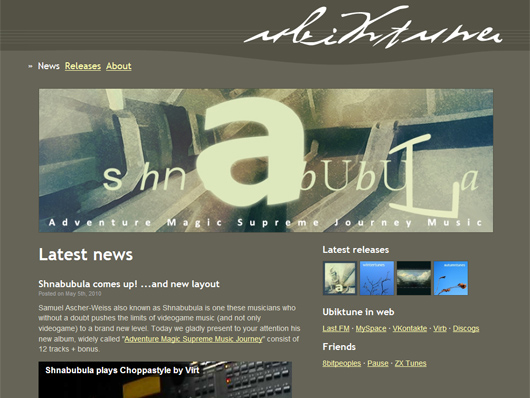
Ubiktune
U is for... Ubiktune
Ubiktune is a net label, and one of many that caters to chip music. The concept of the net label came into being during the ‘90s, when it became feasible to put an entire album's worth of MP3s on the net for all to download.
The net label has proved a popular format for chip music releases, making chiptunes more accessible to the masses, as previously they would've been most commonly released in their native file formats (MOD, SID, etc), or as part of demoscene productions such as demos and music disks.
U is also for... Ultimate Soundtracker
The first ever tracker program, released in 1987 for the Commodore Amiga.
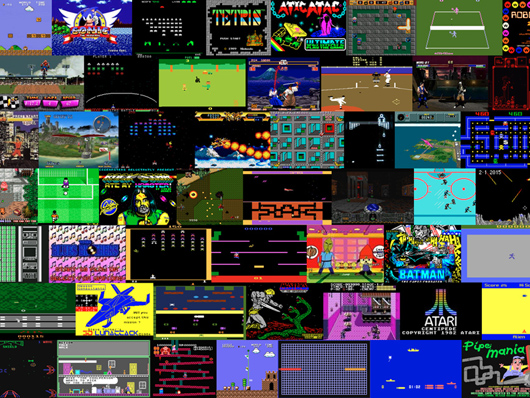
Videogames
V is for... Videogames
We simply call them 'games' these days, but once upon a time, it was necessary to clarify that you were talking about videogames.
Although computer-created music existed prior to videogames, it was the combination of the primitive, low-cost sound chips stuffed into ‘80s home computers and consoles and the necessity of a fun, funky soundtrack to accompany the on-screen action that gave rise to chip music.
V is also for... VortexTracker
A Windows-based tracker for the ZX Spectrum's AY chip - it's undoubtedly the easiest way to create AY tunes. There are similar emulation-based trackers for other platforms.

Waveforms
W is for… Waveforms
Vintage sound chips typically use simplistic waveforms such as triangle, square, sine and sawtooth. Later, sample-based chiptunes made use of single-cycle waveforms of all manner of shapes, often drawn by hand.
What sets sound chips apart from proper synthesisers is that the oscillators often sound quite rough and digital, and the resulting sounds are often simplistic because there's a lack of modulation options - and indeed things that can be modulated. Richer sounds can be created by stacking sounds across channels, detuning them, etc, but when you've only got a handful of channels to start with, this isn't always practical.
W is also for... Wizball
The C64 version of which features some terrific 'chip rock' courtesy of Martin Galway.
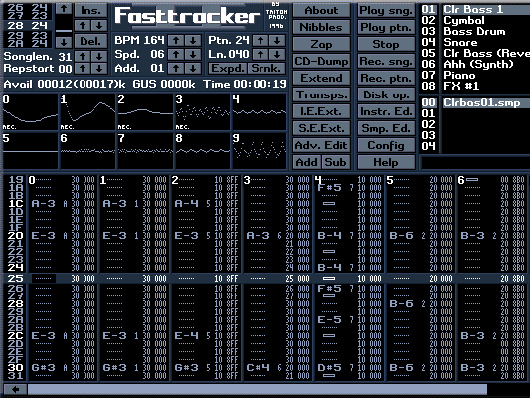
XM format
X is for... XM format
XM is the file format used by the PC DOS-based FastTracker II and, along with Impulse Tracker and Scream Tracker, it was used extensively for chip music.
Despite the PC being capable of far more complex music, chiptunes still featured strongly in the demoscene due to their tiny memory footprint, albeit often using many more channels than you'd hear in "real" chip music. This allowed the compositions to be more complex, but still retaining chiptune traits like simplistic waveforms, arpeggios and crunchy drums. For instance, this Radix tune is a 12-channel XM.
X is also for... X-agon
A member of the AY Riders chip music group.
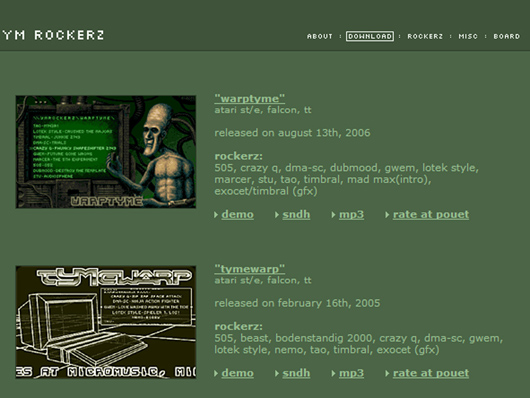
YM Rockerz
Y is for... YM Rockerz
Numerous groups and collectives have kept chip music very much alive over the years. YM Rockerz are one such group, specialising in music using the Atari ST's YM-2149 chip.
This chip is extremely similar to the AY-3-8910 used in 8-bit machines like the ZX Spectrum and Amstrad CPC; however, the extra capabilities of the Atari ST can be leveraged to create a wider range of sounds, such as so-called SID voices.
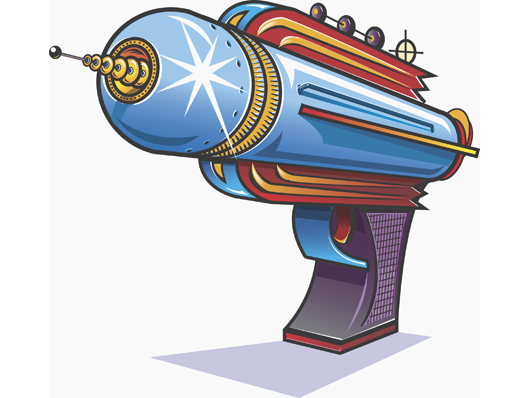
Zap!
Z is for... Zap!
OK, we struggled to come up with something for Z, but no ‘80s videogame would be complete without a selection of zappin' sound effects, and these would often be incorporated into the music too, as percussion or special effects.
Such sounds can be created by playing a very high tone that rapidly descends in pitch. The same technique can be used to create kick drums, toms and, when layered with noise, snare drums.









